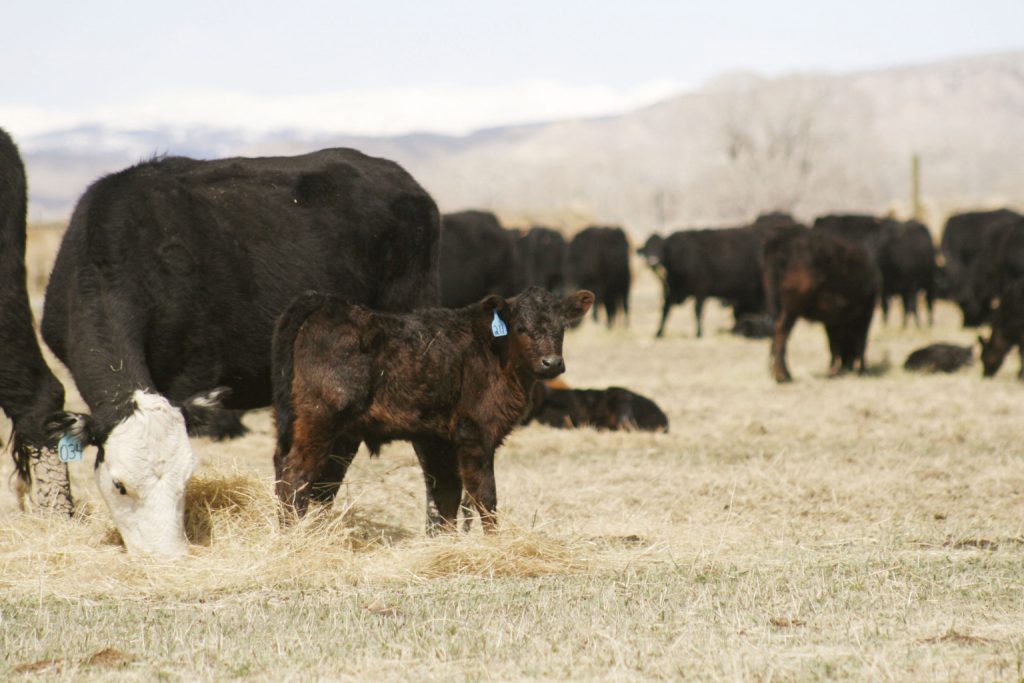Calving preparation: Improving cattle management starts through calving data collection

Calving season is a stressful time of year for many producers, and collecting data can seem like a daunting task at times. The Beef Cattle Research Council hosted a webinar Jan. 12 to discuss the records that are worth spending valuable time on and the tools to help make collecting data easier.
University of Calgary Assistant Professor of Bovine Health Management Dr. Jennifer Pearson advocates for the use of proper data collection during calving season. She says collecting data helps producers monitor inventory and production, investigate herd problems, look for areas of improvement and monitor management changes.
Pearson believes it’s important for producers to keep records to determine if they’re having problems with individual cows.
“Relying on our memory isn’t always the best when we’re trying to make some of these management decisions,” she says.
Pearson urges producers to set “SMART” goals when initially approaching the task of collecting data. Goals should be specific, measurable, attainable, realistic and time-based.
She believes the way producers collect data determines the output they have.
“Put good data in and you’ll get reliable results out in the end,” Pearson says.
How and what to collect
Pearson performed a benchmarking calving study through the Canadian Cow-Calf Surveillance Network to determine what methods of collecting data were most common throughout Canadian producers. She says benchmarking numbers like these can be used as a comparison tool for producers to see where they fit in the region.
“Benchmarking is a great tool for guidance, but it’s not an end goal,” she says. “We can always do better.”
Out of the 100 producers surveyed, 58 percent used paper records only, 37 percent used paper and then transferred to the computer and six percent used only a computer or a hand-held device to record data.
Pearson notes there’s nothing wrong with using paper books to collect data, but it may not be the most efficient method.
“It’s harder to have immediate results when you’re looking at paper records only,” says Pearson.
The benchmarking study determined 98 percent of the producers record date of birth, 89 percent collect calf identification numbers and 73 percent record calving ease scores. Birth weight was recorded by 44 percent of those surveyed and calf sex, coat color, udder score and temperament were recorded less than five percent of the time.
Pearson says there are many different ways to utilize recorded data to improve management practices. Birth weight data is used for calculating calve ease expected progeny differences (EPDs), and according to Pearson’s benchmarking study, the number one reason for producers to select a bull is based on his birth weight.
Measuring birth weight also helps producers calculate an average daily gain and determine growth production. This shows producers how efficient cows are at raising calves and how efficient calves are at growing in their environment.
Pearson says it’s important to record data on the cows as well.
“Looking at udder scoring and dam temperament can really impact what our heifers look like in the future and how those heifers grow their own calves as well,” says Pearson.
Digital data collection
Mark Hoimyr, owner and operator of Box H Farm, a cow/calf operation in Saskatchewan, Canada, shares his experience with collecting calving data on an iPhone.
Hoimyr, like most producers, started out by writing in a paper calving book to collect data. He would transfer the data onto spreadsheets after it was all collected.
“It just got to be a little more than I felt was worth it when it comes to the amount of time it took to record everything,” Hoimyr says.
He began to notice transcription errors when transferring information from the paper book to the spreadsheets.
Hoimyr switched to digital data collection 10 years ago, and he currently uses the app Numbers on his iPhone to collect data. He describes this app as being the “Apple version of Excel spreadsheets.”
The app helps Hoimyr stay organized and declutter. Numbers makes it quick to enter information, offering an option for users to pre-enter cow tags and set defaults in the spreadsheet to speed up the process.
“It’s really quick to use once you get it set up,” says Hoimyr.
Numbers helps Hoimyr keep track of how many cows he has left to calve and how many live calves are born. He says it’s nice to be aware of this information as it’s happening.
One of Hoimyr’s favorite features of the app is it can automatically sort the calves, so he knows which ones still need to be tagged. He says it’s much simpler than scrolling through a list of all the calves.
Hoimyr says using the app successfully does require basic tech skills. It took a while for Homiyr to get into the swing of things with Numbers, but the benefits are worth it.
“Overall, we’re happy with how it’s been able to allow us to keep track of everything we want to keep track of and not spend a whole bunch of time doing it,” Hoimyr says.
Kaitlyn Root is an editor for the Wyoming Livestock Roundup. Send comments on this article to roundup@wylr.net.





